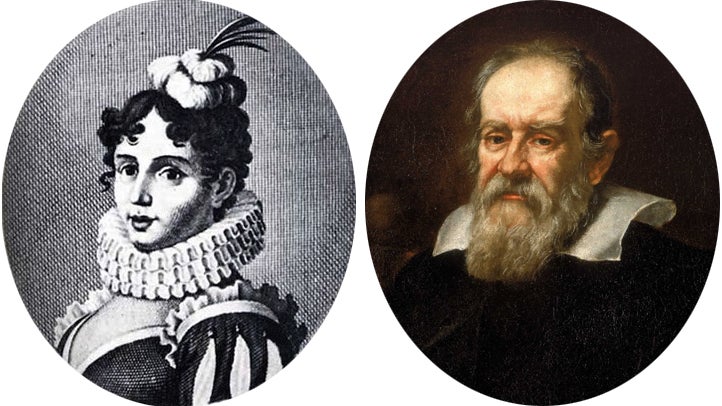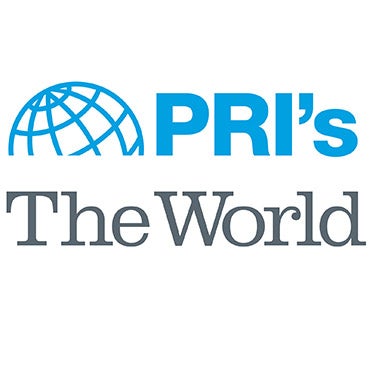First female epic poet, forgotten voice of the Renaissance and Galileo’s pen pal

Poet Margherita Sarrocchi and astronomer Galileo Galilei conducted a correspondence at the center of the Scientific Revolution of the Renaissance.
Four hundred years ago today, the Catholic Church tried to silence Galileo, ending a period of thriving scientific and literary debate among many other forgotten men and women.
Four hundred years ago today, the Catholic Church ordered the scientist Galileo Galilei to stop teaching and writing about heliocentrism.
For the Church, the idea that Earth revolved around the sun was “foolish and absurd … and formally heretical.” It contradicted the teachings of the bible and the notion that an immobile Earth stood at the center of the universe. A ban was issued for all books advocating the ideas of Copernicus, the Polish astronomer whose findings had inspired Galilei. Seventeen years later, in 1633, Galilei would again be called to Rome, accused of defying the 1616 order and championing the Copernican view.
Centuries later, we think of Galilei as the undisputed “father” of the Scientific Revolution. With his brilliant observations and his determination to follow them through to their conclusions despite the Church’s warnings, Galilei epitomizes the triumph of human reason in the face of dogma. So compelling is his dramatic story, in fact, that it overshadows those of many other men and women who were active in this same period of intellectual revolution.
Margherita Sarrocchi dazzles Galileo
Galilei was part of a much larger and richer exchange of ideas, a tapestry populated by figures whose names are virtually unknown to us today. The threads of this tapestry, which incorporated the “new” science alongside the “old” (including alchemy, astrology, and natural magic), suggest that the Scientific Revolution was not the product of a single person or moment, but rather a slow transformation with many participants.
Galilei’s relationship with the celebrated poet and natural philosopher Margherita Sarrocchi offers a window into this vibrant world, along with a reminder of the important — and woefully overlooked — role of women in the history of science.
Sarrocchi and Galilei connected in 1611 at pivotal moments in their respective careers. He was on an upward trajectory, having achieved worldwide recognition with the publication of his “Starry Messenger.” She, a polymath and the first Italian woman to publish a work of epic poetry, had earned a name among both literary and scientific circles. With an expanded edition of her poem, which included scientific themes, she was looking ahead to even greater success. (It was published posthumously in 1623.)
The ward of a powerful cardinal, the well-connected Sarrocchi also had close ties to major scientific societies, such as the Academy of the Lynxes, of which Galilei was a member. She hosted an exclusive salon at her home, where she first met him; her contemporaries recall how she engaged her guests in dazzling debate over various “celestial things.”
After this encounter, the poet and the astronomer began a wide-ranging correspondence in which they discussed Galilei’s discoveries with his new telescope, Sarrocchi’s revisions to her poem, and their mutual interest in casting horoscopes. Their surviving letters offer a vivid record of scientific community and remind us that alongside Galileo, there existed a varied cast of characters, each with his — or her — own compelling story.
A mutually beneficial collaboration
As a female writer subject to bitter criticism as well as praise, Sarrocchi was eager for Galilei’s stamp of approval. She entreated him to read her poem with “an enemy eye” so that she could correct it properly before publication. Galilei wanted Sarrocchi to help him defend his discovery of Jupiter’s satellites, the “Medicean stars” he had cannily named for his patron in Florence.
Sarrocchi and Galilei also found common ground in astrology, still taught in 17th-century universities. Sarrocchi was well known for her skill in casting and interpreting natal charts; Galileo, too, had once made and sold horoscopes to supplement his income. In fact, a manuscript copy of “Starry Messenger” in Florence’s National Library contains a beautifully drawn natal chart produced by Galileo for the Medici prince Cosimo II. Astrology and astronomy remained closely linked. Indeed, some of the earliest objections to Galileo’s observations of new celestial bodies were based on the disruption they posed to the order of the zodiac.
The friendship between Sarrocchi and Galilei was based not only on science and literature, but also on the shared experience of resisting convention. He battled deep-seated convictions about the universe; she contended with the cultural discomfort that surrounded learned women. Each waged a campaign for public approval; each offered the other entry to new arenas. The approval of Galilei, who composed his works in Tuscan Italian — the literary gold standard — would shield Sarrocchi’s poetry against critics; while Sarrocchi could advertise Galilei’s discoveries to a wider audience through her salon and her writings.
Although Sarrocchi was careful never to comment directly on the heliocentric theory, she understood the implications of Galilei’s findings and endorsed them wholeheartedly. Yet as trouble began to brew for Galilei with the Church, their correspondence waned. Perhaps Sarrocchi was unwilling — or unable — to risk continued support of Galilei given her vulnerable status as a female intellectual.
In the early years of the 17th century, before the Church’s ban on Copernicanism and before Galilei’s famous trial, open scientific and literary debate still thrived. Men and women collaborated in intellectual partnership even as they vied to achieve individual recognition and acclaim. In the brief correspondence of Galileo Galilei and Margherita Sarrocchi, both the cooperative nature of the new science and the forgotten female voices of the Scientific Revolution are brought vividly to life.
—
Meredith Ray is an associate professor at the University of Delaware and the author of “Margherita Sarrocchi’s Letters to Galileo” (forthcoming from Palgrave Macmillan, April 2016) and “Daughters of Alchemy: Women and Scientific Culture in Early Modern Italy.” She has lectured on her research at a number of universities, including the University of Pennsylvania, where she has also been a visiting scholar.
WHYY is your source for fact-based, in-depth journalism and information. As a nonprofit organization, we rely on financial support from readers like you. Please give today.



